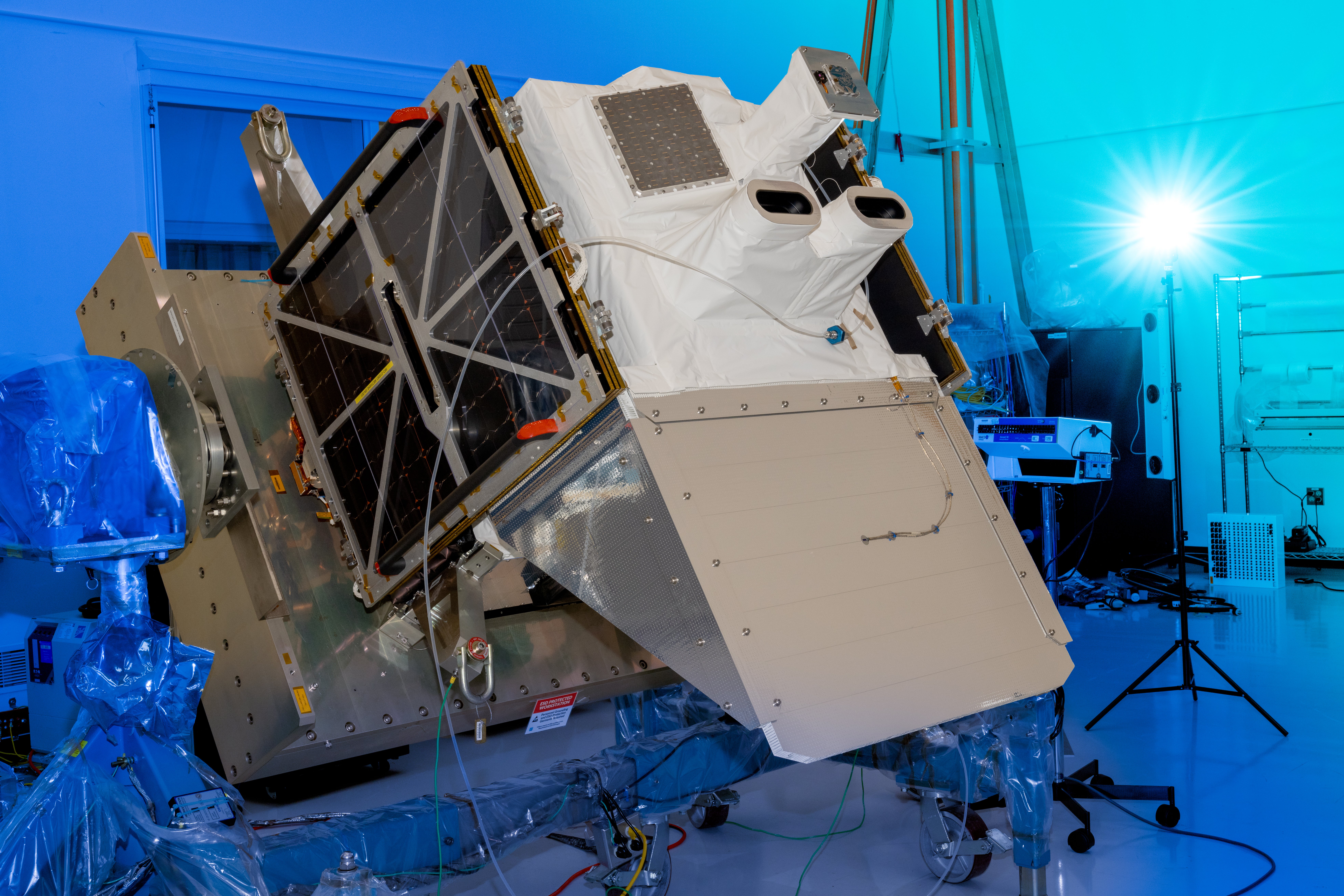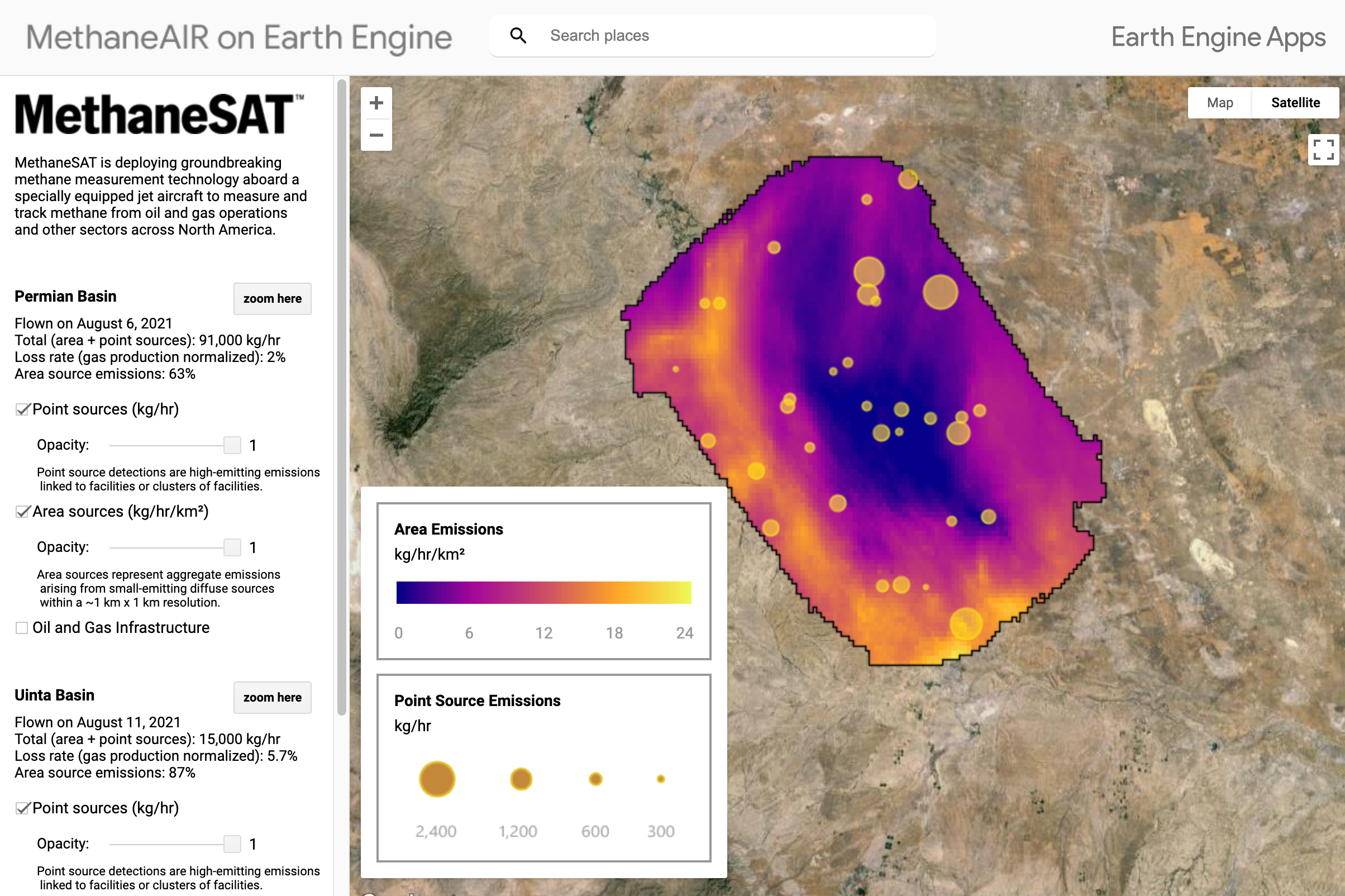Environmentalists launch satellite to track world’s worst methane leakers
Real-time information on the oil and gas companies responsible


A new satellite can now track polluters from the sky making it easier to hold “bad actors” in the oil and gas industry responsible for dangerous leaks.
MathaneSAT, a satellite designed to track methane emissions, was launched on a SpaceX Falcon9 rocket on Tuesday at 11am New Zealand time (10pm GMT on Monday).
Methane, an invisible yet highly potent gas, is responsible for one-third of global heating. Yet it is colourless and odourless, making it difficult to track.
“Methane emissions have been overlooked and hard to detect for far too long,” said Dr Kelly Levin, the chief of science at the Bezos Earth Fund, which helped to fund the project said.
“MethaneSAT changes the equation, putting science and data front and centre.”
“From the sky, MethaneSat can see what others can’t, helping good actors and holding bad actors accountable.”
It will orbit the planet 15 times per day, using infrared sensors to measure methane leaking from all of the world’s major oil and gas production centres.

It is the first satellite in space designed by an environmental non-profit, the US based Environmental Defense Fund. It cost $88m to build and launch and was developed in partnership with the New Zealand Space Agency.
The “superpower” of MethaneSAT lies in its advanced ability to precisely measure methane levels with “high spatial resolution” over wide areas. It will measure changes in methane concentrations as small as three parts per billion.
It has a resolution of about 140 metres, compared with the European Space Agency’s Sentinel 5P which has resolution of about six kilometres (3.7 miles). This means it can detect emissions from small, dispersed sources that were previously invisible to other satellites.
It will also identify larger emission sources that might have been overlooked with its wide-camera view, which is designed to survey large areas, such as entire states, countries, or major oil and gas basins.
“You can’t manage what you can’t measure, and that’s certainly true when it comes to cutting methane, one of the biggest drivers of climate change,” said Michael R Bloomberg, founder of Bloomberg LP and UN secretary-general’s special envoy on climate ambition.
“Data from this satellite will help us to better measure methane emissions and target their sources, bringing more transparency to the problem, giving companies and investors the information they need to take action.”
Steven Hamburg, EDF Chief Scientist and MethaneSAT project leader, said: MethaneSAT’s superpower is the ability to precisely measure methane levels with high resolution over wide areas, including smaller, diffuse sources that account for most emissions in many regions,” said
“Knowing how much methane is coming from where and how the rates are changing is essential.”
Google, which is also part of the team of creators of MethaneSAT, will use AI algorithms, informed by satellite imagery, to construct maps of oil and gas infrastructure around the world, which are the biggest sources of the potent gas.

With the help of these maps, people can see exactly where methane plumes are coming from. This means that researchers, regulators, environmental defenders and the general public can now track real-time information and hold oil and gas companies responsible for their emissions.
Methane emissions are the second biggest problem for the world after carbon pollution and
Reacting to the launch, the Oil industry group American Petroleum Institute said emissions data from third parties should not be used for regulatory purposes without verification.
“The environmental regulator is still going to be paramount here as the authority in terms of validating the data, said Aaron Padilla, API vice president of corporate policy.
Mark Brownstein, senior vice president for energy transition at EDF, said he hopes oil companies will use this data “in a constructive way”.
“2024 marks the start of a new era of radical transparency in greenhouse gas measurement,” he said. “We’ll be able to see who the laggards are, but hopefully, they will use that information in a constructive way to improve their performance.”
All over the world, there are inreasing efforts being made to reduce methane emissions. In the United States, the Biden Administration has proposed new rules to charge fees for excessive methane emissions, making accurate reporting essential.
In Europe, there’s legislation in place that paves the way for requiring practical emissions data from gas importers.
Recently, in Kazakhstan, an oil company was fined for “one of the largest leaks” of methane ever recorded, which experts said was a big step.
These efforts align with global initiatives, such as the Global Methane Pledge, where over 150 countries have committed to cutting methane emissions by at least 30 per cent from by 2030. During the Cop28 climate summit last year, more than 50 companies also pledged to eliminate methane emissions.
“Cutting methane pollution from fossil fuel operations, agriculture and other sectors is the single fastest way to slow the rate of warming as we continue to decarbonise our energy systems,” said EDF President Fred Krupp.
Join our commenting forum
Join thought-provoking conversations, follow other Independent readers and see their replies
Comments
Bookmark popover
Removed from bookmarks